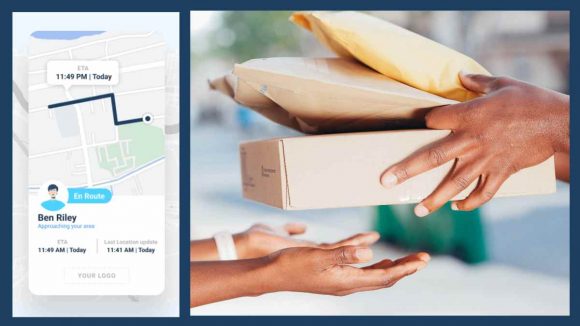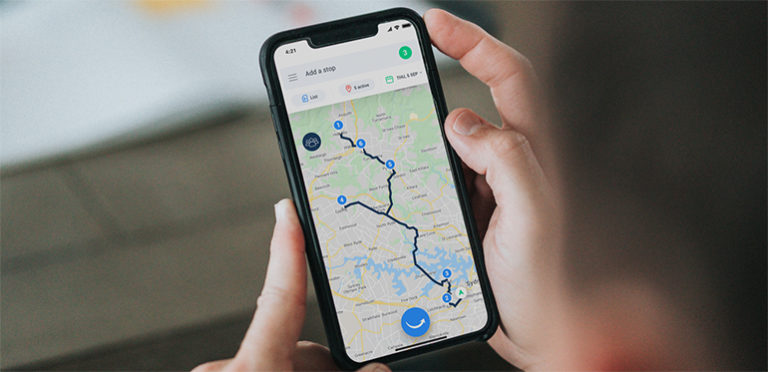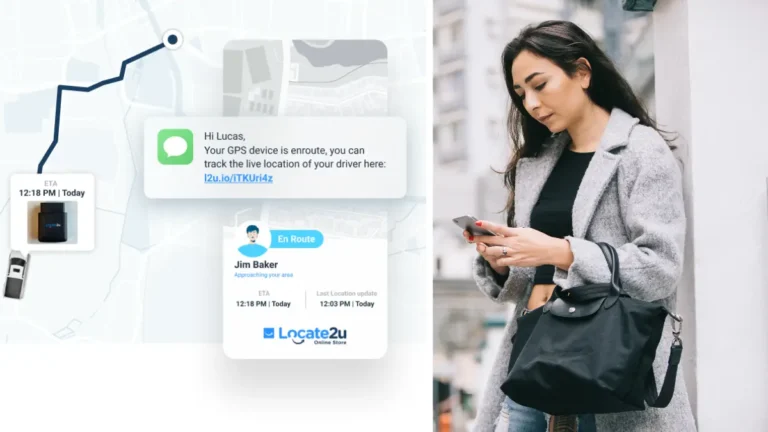Proof of Delivery (POD) is more than a photo or a signature. Businesses use it as a critical safeguard for customers.
When done right, it prevents disputes, builds trust, and ensures a seamless delivery experience.
However, some delivery drivers do not capture clear images or follow instructions correctly, resulting in unreliable proof of delivery.
Unclear or unreliable POD can lead to customer complaints, refund requests, and lost business.
Here are ten best practices to ensure every delivery is adequately documented.
1. Capture a Clear Photo of the Delivered Package
A high-quality photo showing the package in its final location is important. In the example below, the driver took a photo of his feet.
The label should always be visible in the final photo. Avoid blurry or dark shots.
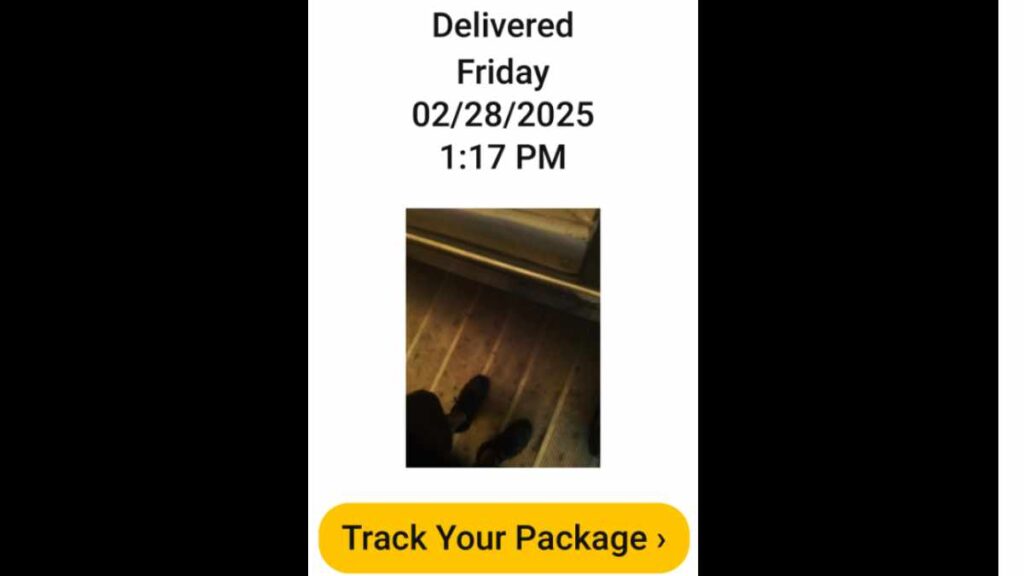
2. Include a Wide-Angle View for Context
It’s good to give a wider perspective of where the parcel has been dropped off. This will give the customer an idea of where the item is in relation to a door, mailbox, or another recognizable feature.
It also helps the customer to see that it’s been left in the right place.
3. Collect an Electronic Signature During Proof of Delivery
For high-value or sensitive deliveries, the recipient’s signature is required.
You can use a digital signature tool to create a timestamped record. Make sure the name matches the intended recipient.
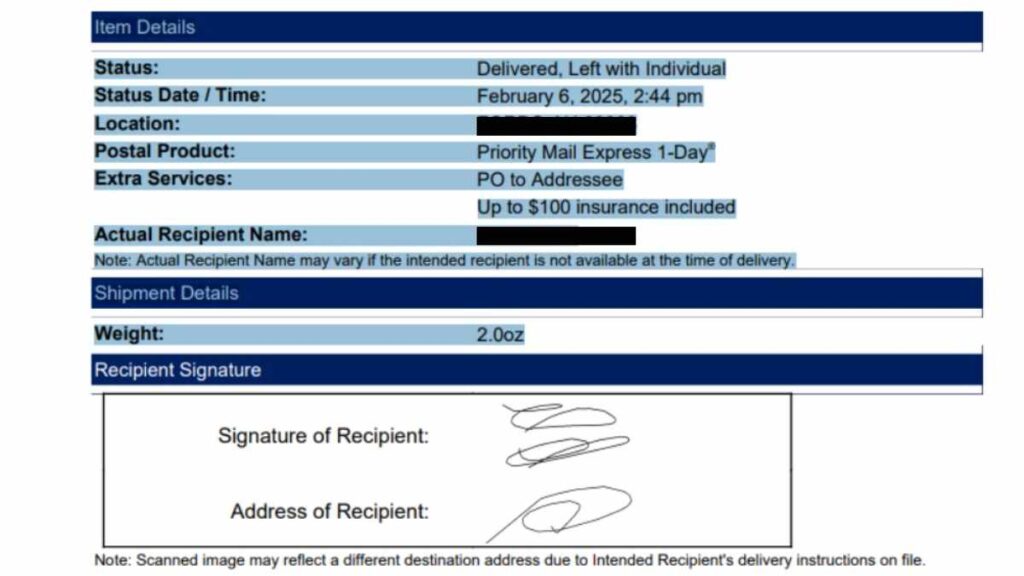
4. Use GPS and Timestamp Logging
You can automate the location and time tracking to confirm the exact drop-off details.
This helps to verify the accuracy of POD if disputes arise. It provides businesses with a clear audit trail for deliveries.
5. Ensure Special Delivery Instructions Are Followed
Drivers should check and follow any specific drop-off requests.
Sometimes, they think a photo of where it’s dropped off is enough. But it needs to be handed over successfully in the customer’s hands.
If instructions cannot be followed, document the reason with a photo and note. Always try to avoid leaving packages in unsafe or exposed locations.
6. Provide Real-Time Updates to Customers
Send an instant notification when the package is delivered. This can be accompanied by a link to the POD image and any relevant details.
It reduces unnecessary customer support inquiries. It also gives the customer time to respond in real-time to make sure it’s not dropped off at the wrong place.
ALSO READ: How to choose the best proof of delivery app
7. Verify the Delivery Address Before Completing the Drop-Off
Double-check that the delivery matches the order details. If it’s in a security-controlled area or gated community, make sure you have the code to access this building block.
If there is uncertainty, confirm with the customer or delivery manager. Check the address before setting off to the place.
If you leave packages at incorrect locations, it can lead to customer disputes and loss of future business.
8. Train Drivers on POD Best Practices
Ensure that all delivery personnel understand the importance of clear and reliable POD.
This can be done in the form of training or guidelines on photo quality, signature collection, and GPS verification work.
Regularly reviewing the POD records can also help to maintain consistency and a high standard.
9. Store POD Records Securely
Never destroy your digital record for future reference.
There are some people who do this manually, and it takes up space in a store room, etc. However, by using electronic POD, you can use cloud-based storage to prevent data loss.
This ensures that you have easy access to the documents in case of customer disputes or claims.
10. Make POD a Standardized Process Across All Deliveries
Avoid inconsistencies in your Proof of Delivery by ensuring every driver follows the same POD procedures.
Also, standardized proof helps improve your drivers’ efficiency and reduces errors.
It also helps to build a reputation as a company with reliable and professional deliveries.
Final Thoughts
Capturing reliable Proof of Delivery is not just about confirming a completed drop-off; it’s about protecting businesses, improving customer satisfaction, and eliminating delivery disputes.
By following these best practices, businesses can ensure every package is accounted for, and every customer feels secure.
About the author
Mia is a multi-award-winning journalist. She has more than 14 years of experience in mainstream media. She's covered many historic moments that happened in Africa and internationally. She has a strong focus on human interest stories, to bring her readers and viewers closer to the topics at hand.

